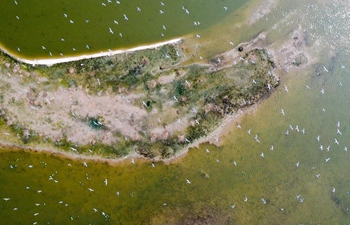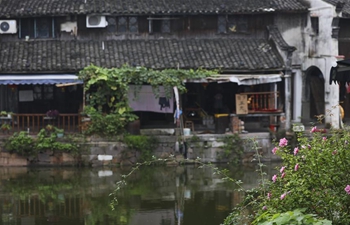TAIYUAN, July 6 (Xinhua) -- Chinese archaeologists have discovered house ruins dating back 5,000 to 7,000 years ago in north China's Shanxi Province, according to local authorities on Saturday.
According to the provincial archaeological institute, the relics were excavated in Degang Village, Luliang after a two-month rescue excavation began in April. An estimated area of 5,000 square meters has been excavated so far.
Archaeologists discovered a group of half-carved pentagon house ruins of the Neolithic Yangshao Culture, including oval-shaped fireplace relics and fragments of bottles and potteries.
The Yangshao Culture, dating back to 5,000 to 7,000 years ago, originated on the middle reaches of the Yellow River and is considered an important stream of Chinese civilization.
The largest house ruin covers an area of 137 square meters, along with a fireplace with a diameter of 1.4 to 1.7 meters and a 4.2-meter-long and 0.8-meter-wide stone doorway.
"The scale is much bigger, and with passive solar orientation and specific location of the fireplace, it is unlikely to be a common residence," said He Nu, a researcher with Chinese Academy of Social Sciences. "Maybe it is for tribal leaders to hold special ceremonies."
Other experts disagree by saying that the unearthed pottery cannot meet the standard for ancient ceremonies. With a limited study on the house structure so far, its function cannot be determined.
The discovery can help with the study of local productivity, social structure and religious customs during the Yangshao Culture period.
"Further study is underway. With interdisciplinary cooperation, experts can unveil its function and restore its original structure," said Wang Yueqian, an archaeological researcher with the National Museum of China.
















